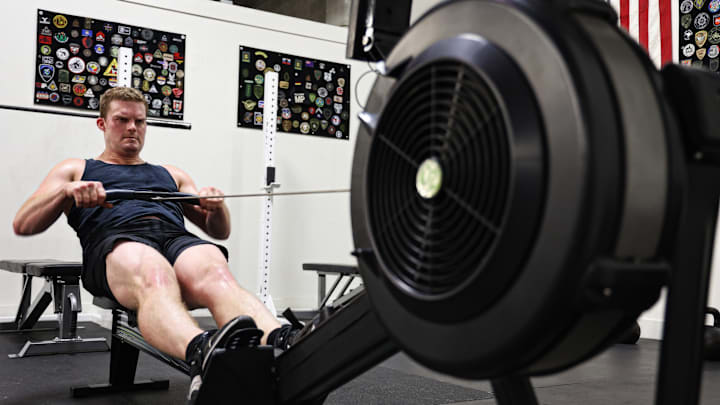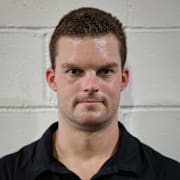Combat Conditioning Series: Explosive Power Endurance for MMA

Combat Sports offer a unique blend of conditioning demands athletes and for strength and conditioning coaches to address. “Conditioning” is best broken down and classified by the body’s three different energy systems:
Phosphagen Energy System:
Fast Acting, Creatine Phosphate is broken down and binds with ADP to form ATP. This reaction is anaerobic, happens at a very high rate of speed and supplies energy very quickly, but only for a short duration, typically around 10-15 seconds of maximum effort.
Trained athletes possess a more developed ATP-PC system that can sustain itself a few seconds longer and replenishes faster due to physiological adaptations to training: increased capillary density and deeper stores of creatine phosphate, just to name a few.
At Project Deliverance, we classify this energy system as Explosive Power Endurance, the ability to produce explosive power repeatedly as the task at hand demands.
Anaerobic Glycolysis System (Fast Glycolysis)
Another fast-acting energy system for high intensity, short to moderate duration activities. This system provides ATP quicky but not as rapidly as the phosphagen energy system and is used when the duration of the activity exceeds what the ATP-PC system and aerobic metabolism can support.
This system functions without the use of oxygen and uses glucose (sugar) to produce ATP. Glucose is metabolized through a sequence of reactions resulting in the production of pyruvate. When oxygen is insufficient, pyruvate is converted into lactate (lactic acid).
This system provides energy for high intensity activity lasting approximately from 30 seconds to 2 minutes. Examples in Combat Sports include Intense Exchanges during a bout and Hard Nonstop Grappling or Wrestling.
We train this energy system using many different variations of intervals consisting of various durations for work / rest as well as a variety of intensities designed to target the physiological adaptations we need to fortify and strengthen this specific energy system.
Adaptations include increased bioavailability of glycogen in the muscles, capillary density, increased levels of sodium bicarbonate in the blood as a lactate buffer, and increased muscle surface area to deal with higher levels of blood lactate.
Oxidative (Aerobic) Energy System
This energy system is often referred to as “cardio” and is the primary energy source for prolonged, moderate to low intensity activity. This energy system is always active at rest and provides support and energy yield to support the Glycolytic and ATP-PC system.
So, if a fighter possesses a very robust and efficient oxidative energy system, they will be able to provide greater support and replenishment for the other faster acting energy systems. This translates to better “cardio” during high output fights and competitions.
The Oxidative Energy System relies on carbohydrates and fatty acids primarily as a fuel substrate, though proteins can be used during an energy pinch during exhaustive efforts (hours) where the primary fuel substrates are deficient. Everyone remembers learning about the Krebs Cycle in high school and college biology and anatomy & physiology.
Through a rather lengthy process which is much slower and complex than the first two anaerobic systems, this oxidative process yields 20 ATP from two turns of the Krebs Cycle, 7 from Glycolysis, and 5 from the conversion of Pyruvate to Acetyl-CoA for a grand total of 32 ATP. We train this energy system through long, sustained aerobic efforts targeting the 60-70% Heart Rate Zones.
A good indicator of hitting this proper intensity is the ability to carry a conversation during the effort itself.
For today’s session, we will be introducing a couple different variations of intervals to target the ATP-PC and Aerobic Glycolysis Energy Systems Specifically.
For more workouts like this, visit the Project Deliverance Website.
1. Warm Up
Cardiovascular Activity* - 5 to 10 minutes
Foam Roller - 5 to 10 Minutes
Shoulder Dislocate with PVC Pipe - 10 reps
Air Squat - 15 reps
Walking Lunge - 20 reps
Box Jump @ Moderate Height - 5 reps
Peaks & Valleys - 5 reps
2. Rotation 1
10-second Sprint * / 60-second Easy Active Recovery Effort**
Rest (4 minutes)
*on Bike, Rower, SkiERG, Road, Stairs, Track, etc.
**Keep your body moving to aid in recovery.
3. Rotation 2
30-second Sprint @ Fast Pace or 90% Max Heart Rate* / 90-second Easy Active Recovery Effort** - 10 reps
Rest (4 minutes)
*on Bike, Rower, SkiERG, Road, Stairs, Track, etc.
**Prepare yourself for the next sprint! Maintaining intensity during the Sprint Interval is the most important.
4. Rotation 3
Push-Up - 10 sets of 10 reps
Rest (30 seconds between sets)
5. Cool Down
Foam Roller or Easy Cardiovascular Effort - 5 to 10 minutes
